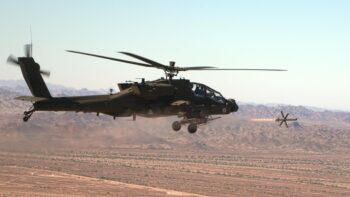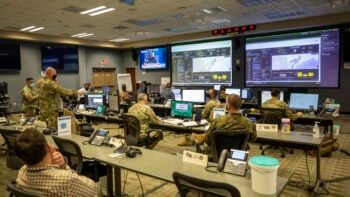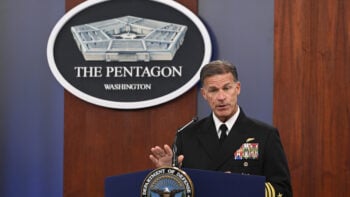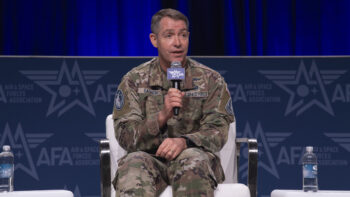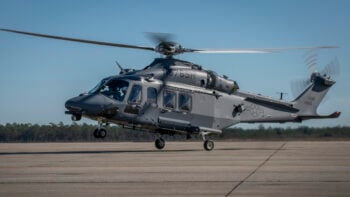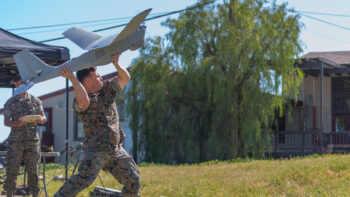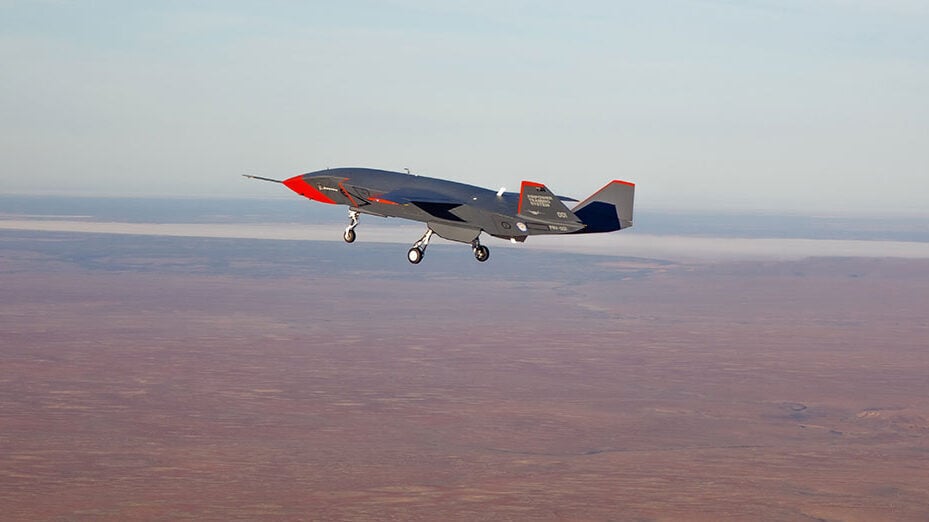
An MQ-28 Ghost Bat drone flies in tests for the Royal Australian Air Force. (Australian Department of Defence)
SYDNEY — Australia has pledged to invest another $400 million AUD ($260 million USD) into the indigenous Ghost Bat autonomous drone program, a top defense official announced today, while also disclosing for the first time that Canberra plans to unveil its first armed unmanned autonomous vehicle later this year.
“I won’t go into details of the nature of that drone for security reasons,” Pat Conroy told reporters in the Australian capital, adding the government has been testing a “range” of unmanned systems for the Army, Navy and Air Force that can be armed. “But I want to assure everyone in this country that we are spending lots of time working on drones.”
Malcolm Davis, a defense expert at the Australian Strategic Policy Institute here, noted that the previous government canceled the purchase in April 2022 of General Atomics’ armed combat drone, the MQ-9, a sale seven years in the making. Whatever the mystery drone is, Davis said the Australian Defense Force, “will need to embrace [a] high-volume, low-cost capability if it wants to be effective in future wars.
“We cannot keep on emphasising boutique capabilities that are high cost, thus preventing us from exploiting large numbers to generate effective combat mass,” he said.
RELATED: ‘Replicator’ revealed: Pentagon initiative to counter China with mass-produced autonomous systems
Conroy’s brief mention of the still-secret armed drone came at a press conference where he announced Australia’s $400 million AUD investment into the Ghost Bat program, with most of the money to be spent on loyal wingman software to allow three new aircraft to fly with each other and with manned aircraft.
“This investment will build three new next-generation Block 2 Ghost Bats. They will have an enhanced design and improved capabilities. This funding boost will enable a focus on developing sensor and mission payloads and integrated combat system and autonomous systems,” Conroy said today. “But the majority of the funding will go into developing the unique Australian technology that allows the Ghost Bats to work together with each other and with crewed aircraft as one team to achieve their mission.”
Ghost Bat is the first Australian-designed and built aircraft in more than 50 years, and Canberra is very hopeful that the program will lead to a large export market. It signed a data sharing agreement with the United States last year, and at least one Ghost Bat has been spotted in the US.
Conroy told reporters that the Boeing Defence Australia aircraft would perform “combat roles” and could be used with F-35s, F-18s, early warning Wedgetail aircraft and sub-hunting P-8s for roughly 10 percent of the cost of a manned aircraft.
“My understanding is the $400 [million AUD] will support additional aircraft and testing of more advanced capabilities on these new aircraft, but it’s not yet a commitment to operational deployment,” Davis said. “Once again, the challenge is unit cost, […] the issue is how ‘attritable’ are they? How many will we get? If we only get small numbers of these aircraft, then we waste the opportunity to build combat mass, and their ability to perform the CCA function will be limited.”
The US Air Force is interested in the Ghost Bat to study how drones can pair with fighter jets in combat as the service looks to field an initial fleet of 1,000 uncrewed collaborative combat aircraft (CCAs) that can fly with manned fighters in battle. US Air Force officials say drones like this will provide an “affordable mass” by filling roles like missile trucks, and conducting electronic attack and surveillance.
As usual, the Australian government noted the program’s effect on employment, saying it “secures over 350 jobs across Australia and will ensure ongoing work for over 200 suppliers, supporting the local defence industry and further contributing to well-paid employment opportunities for Australians.”
Almost three-quarters of the new aircraft will be built with Australian-built components, the government’s press release said.
















